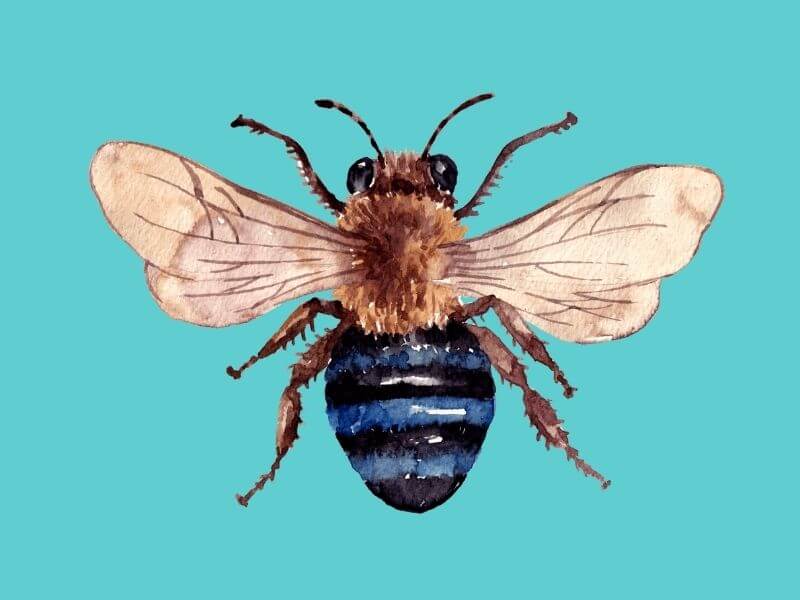Last updated on January 4th, 2024 at 02:19 pm
When you think of bees, the image that often comes to mind is the classic black and yellow striped honeybee. But the world of bees is vast and diverse, and among its many wonders is the Amegilla cingulata, more commonly known as the Blue-Banded Bee. This striking bee is not just a pretty face; it plays a crucial role in our ecosystem. Let’s dive into the captivating world of the Blue-Banded Bee.
Appearance: A Sky-Blue Marvel
The Blue-Banded Bee is a sight to behold. Its most distinguishing feature?
- Vibrant blue stripes: Unlike the common honeybee, this bee boasts beautiful blue stripes across its abdomen.
- Size: They are typically around 11mm in length, making them slightly larger than the average honeybee.
- Fuzzy body: A fuzzy thorax gives them a somewhat cuddly appearance, though it’s best to admire from a distance.
Habitat: Where to Find Them
If you’re keen on spotting these blue wonders, here’s where you should look:
- Geographical spread: Predominantly found in Australia, but they also inhabit parts of Papua New Guinea, Indonesia, East Timor, Malaysia, and India.
- Preferred habitats: They love urban areas, woodlands, and coastal dunes. You might spot them in your garden, especially if you have native flowers.
Behaviour: The Buzzing Ballet
The Blue-Banded Bee has some unique behaviours that set it apart:
- Solitary nature: Unlike honeybees that live in colonies, these bees are solitary creatures. Each female bee builds her own burrow to lay eggs.
- Buzz pollination: They have a special way of extracting pollen called ‘buzz pollination’. They grab onto a flower and move their flight muscles rapidly, causing the flower to release its pollen.
Diet: A Flower’s Best Friend
What’s on the menu for the Blue-Banded Bee?
- Flowers, flowers, and more flowers: They primarily feed on nectar, making them vital pollinators. They have a penchant for native Australian flowers, but they’re not too picky and will visit a variety of plants.
When and Where to Spot Them
If you’re planning a bee-watching adventure, consider the following:
- Time of year: The warmer months are ideal. In Australia, this means from October to April.
- Time of day: Early morning or late afternoon is when they’re most active.
- Location: Gardens with native flowers, woodlands, and coastal areas are your best bet.
| Best Time to Spot | Location | Activity Level |
|---|---|---|
| Early Morning | Gardens | High |
| Midday | Woodlands | Moderate |
| Late Afternoon | Coastal Areas | High |
Why They Matter
The Blue-Banded Bee is more than just a pretty insect. They’re essential pollinators, especially for crops like tomatoes, eggplants, and chillies. By ensuring the reproduction of these plants, they play a direct role in our food supply.
Moreover, their unique buzz pollination technique is something not all bees can do. This makes them invaluable to certain plants that rely on this method. Never heard of buzz pollination before? Click here to check out the answers to What is buzz pollination?
Conclusion
The Blue-Banded Bee is a testament to the incredible diversity of bee species. Their vibrant appearance, unique behaviours, and crucial role in the ecosystem make them fascinating subjects.
Want to learn more about different bee species? Head over to our bee identification chart for a complete guide.





